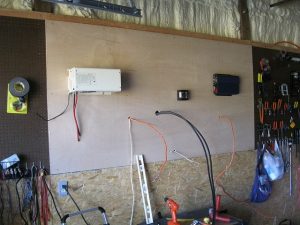Plywood is a great construction material for homes and offices. It has many amazing qualities and features, making it much more suitable than wood for construction anywhere and everywhere. Heat-resistant plywood is a special type that has been hardened and can withstand fire and extreme temperatures without losing its functionality or purpose.
Creating such a type of plywood is not easy, though. Wood is naturally combustible, and even though plywood is a composite material, it is still not entirely fire-proof. Engineering heat-resistant wood requires combining other non-combustible materials, like fire-grade plasterboard or fibrous cement, to make it reliably heat-resistant. It is sometimes referred to as FTR (Fire-Retardant-Treated).
How Heat Resistant Plywood Works
Heat resistant plywood is made by pressure treating regular plywood with non-combustible materials. These non-combustible materials include fire retardant chemicals. In a fire, the heat-resistant plywood is subjected to an elevated temperature, producing low-level acids from the fire-retardant components of the treated plywood. These acids limit the production of gases that contribute to fire spread, lower the temperature at which thermal degradation occurs, and increase the amount of surface char. Thus, the ability of the fire to spread diminishes, and the plywood chars instead of bursting into flames.
Uses

Plywood with heat resistance is used as a backer board for mounting electrical panels. Since it is inflammable, it provides a great shield for the electric cables and prevents a fire from erupting because of electrical hazards. Moreover, installing electrical cables into plywood is much easier than masonry walls. Further, fire retardant plywood (or FTR plywood) is a good insulator and prevents moisture from sneaking into the electrical panel.
Another use of heat resistant plywood was made to keep the fire from spreading from one part of a building to another. Due to its inflammable nature, panels made from fire retardant plywood can limit the damage a fire might do to a home made of wood and prevent it from spreading to other nearby buildings. Such retardant plywood panels were used in the roofing decks instead of the vertical through-roof firewalls in multiple-dwelling buildings. Besides being able to provide the same level of safety, they are much cheaper and make re-roofing easier than was the case with vertical through-roof firewalls.
Problems Associated with Heat-Resistant Plywood
The use of plywood in roof sheathing was discontinued because it was found that the retardant plywood was vulnerable to premature degradation because of the high temperature in the attics. To reduce the premature degradation of this material, researchers found that air-drying the plywood after the pressure treatment procedure had been performed caused fewer problems than kiln-drying it. Therefore, if you want to use heat retardant plywood for roof sheathing purposes, it is best to ensure that it is ADAT (Air-Dried After Treatment) and not KDAT (Kiln-Dried After Treatment).
OSB and MDF
OSB and MDF are among the close relatives of heat resistant plywood as they, too, are engineered woods. OSB is used extensively in the construction of homes similar to heat-resistant woods. In contrast, MDF is used for making loudspeaker enclosures and school projects because of its rigidity and flexibility compared to regular plywood.




